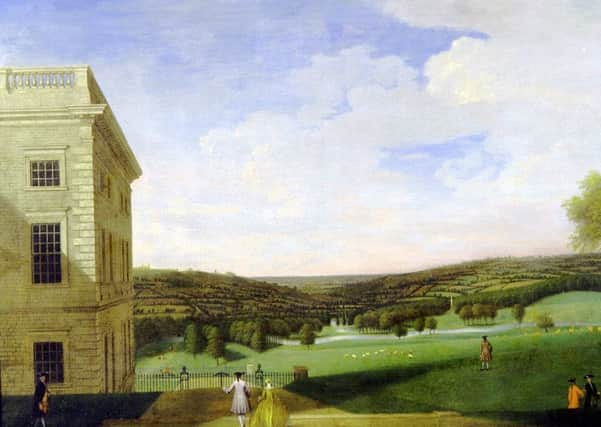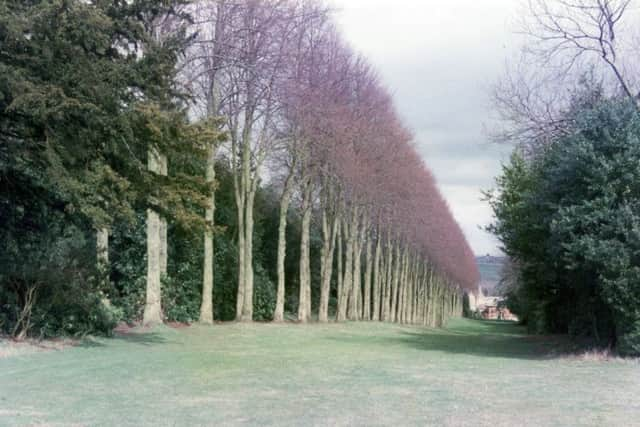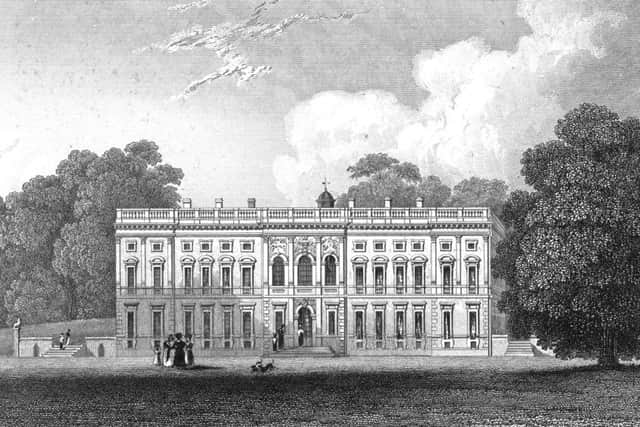Nostalgia on Tuesday. Grand Designs


Quite unexpectedly, the inheritance meandered its way down through the female line to the 2nd Earl’s sister’s son, Thomas Watson. While the latter gentleman adopted the suffix Watson-Wentworth, Sir Thomas Wentworth only gained the title Lord Raby.
Although devastating for Sir Thomas, this unhappy sequence of events seemingly injected him with new life. In 1708 he splashed out £14,150 for Stainborough Hall, which was only six miles from Wentworth Woodhouse and embarked on an ambitious rebuilding programme. Was he devilishly trying his damndest to build a more impressive pile than at Wentworth Woodhouse? Some people firmly believe so and even argue he succeeded.
Advertisement
Hide AdAdvertisement
Hide AdStainborough Hall was formerly owned by the Everinghams who, in 1610, sold it to the Cutler family and it was bought from them by Sir Thomas. As a soldier and diplomat Sir Thomas was a great success, and he was rewarded by two monarchs – William III and Queen Anne. Thus, it was estimated that he had £18,739 tucked away in 1708, to acquire and begin developing Stainborough as a viable Wentworth Woodhouse rival.


Additionally, ownership of the Stainborough estate was essential to the success of Sir Thomas’s bid to revive the Earl of Strafford title – extinct from 1695. When this was granted in 1711 he became the 1st Earl of Strafford (2nd creation), much to the chagrin of his rival cousins at Wentworth Woodhouse.
Rebuilt by the Cutler family, Stainborough Hall (later to become more commonly known as Wentworth Castle) was extended by Sir Thomas in the Baroque style between 1710-1714. Facing east, the extension was influenced by styles he had seen whilst Ambassador to Prussia.
The 180ft Long Gallery was devoted to sculptures and paintings bought in Italy. Royal gardener, George London, designed a series of formal gardens and waterworks, adorned with statues.
Advertisement
Hide AdAdvertisement
Hide AdOn the site of an older earthwork, work began, in 1726, on a miniature medieval castle. It is among the first examples of the Gothic folly later to become so popular with Georgian landowners and was visible for miles around. When completed in 1731, Strafford emphasised his point by giving the folly the ancient name of Stainborough Castle and re-naming Stainborough Hall as Wentworth Castle.


As soon as the son of Thomas Watson-Wentworth, who was also called Thomas, inherited Wentworth Woodhouse in 1723, he launched a cultural counter-attack on Wentworth Castle by lavishly developing his property and re-naming it Wentworth House. A new Baroque front was his first riposte, and a grand Palladian mansion was erected, which at 606ft is considered the longest front of any country house in Britain.
Following Sir Thomas’s death in 1739, his son William continued the rivalry with the Wentworth Woodhouse neighbours and added a Palladian wing to Wentworth Castle. Preferring his country estate to a political career, William transformed the formal avenues and woods of the park.
When William died childless in 1791, the Wentworth Castle estate went through 15 years of financial hardship which was complicated by the death of three elderly owners in quick succession. After a special Act of Parliament (1795) and acrimonious feuds among the families of William’s three sisters, Wentworth Castle passed in 1804 to the descendants of the youngest, Lady Harriet. Frederick Vernon-Wentworth (born 1795) eventually took control. He set about restoring the estate and developing the gardens.
Advertisement
Hide AdAdvertisement
Hide AdHe was succeeded by his son, Thomas Vernon-Wentworth (born 1831), and grandson, Captain Bruce Vernon-Wentworth (born 1862). Thomas installed electricity and built the remarkable conservatory, c.1885. He also replanted the avenue of lime trees known as Lady Lucy’s Walk (1919).


Sadly, many of the sumptuous furnishings and furniture were sold off at a sequence of sales in 1911, 1918 and 1948. It would appear that by the 1930s the Vernon-Wentworths preferred their other properties. During the Second World War, the War Office Inventory (1940) recorded a run-down mansion.
To their credit Barnsley Council saved Wentworth Castle and the 60-acre garden in 1948 through a purchase from Captain Vernon-Wentworth for £26,000. The mansion was converted into a training college for women specialising in nursery and primary school teaching. When the college moved to Sheffield Polytechnic in 1978, Wentworth Castle became the home of the Northern College of Residential Adult Education.
The site was saved between 2003-2013 by the Wentworth Castle Heritage Trust which raised £20m to restore the mansion, gardens, park, estate church and follies as well as the Victorian conservatory. The first phase was the largest restoration project in the country, enabling the Trust to open the gardens and park to the public in 2007. Sadly, the gardens closed this year.
Advertisement
Hide AdAdvertisement
Hide AdSee also: Patrick Eyres and Jane Furse, Wentworth Castle Gardens - Guidebook (Stainborough: Wentworth Castle Heritage Trust, 2014). The Yorkshire Country House – a tour through the county’s grandest homes is available to order online at www.ypbookoffer.co.uk or call 01274 735056.